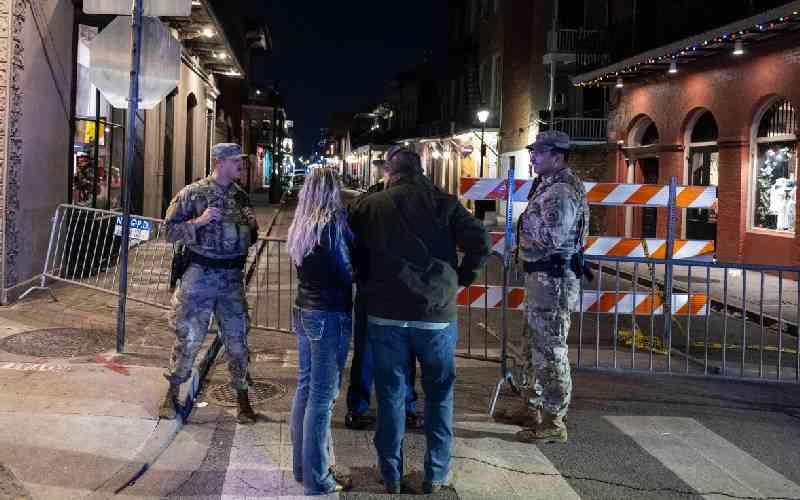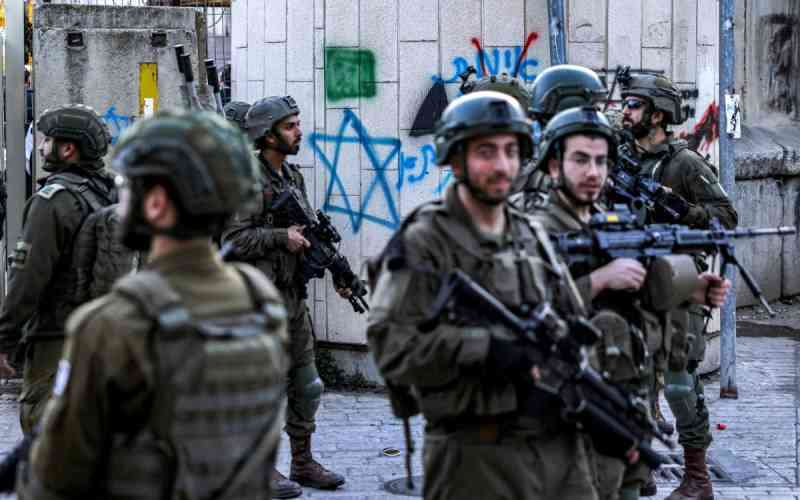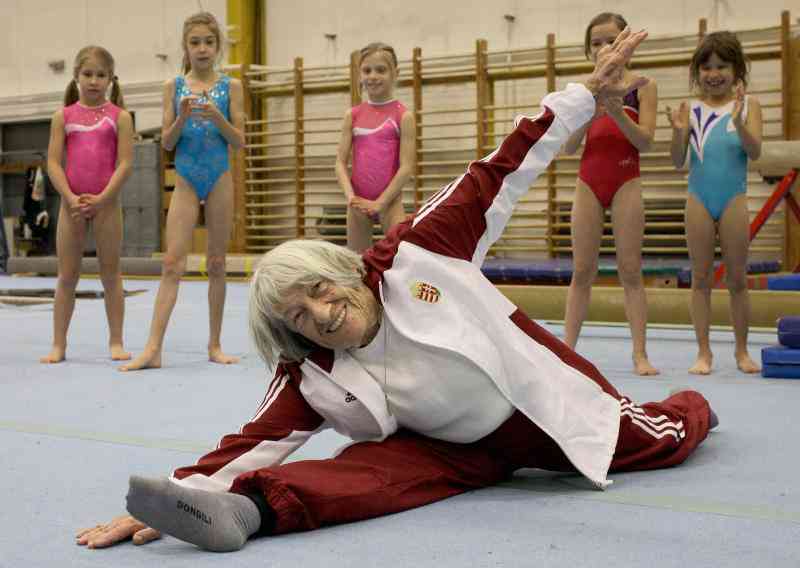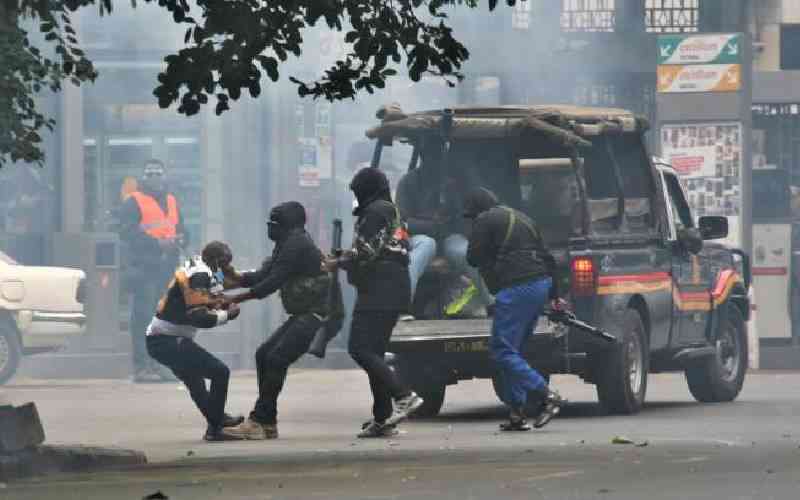Björn Ihler was left traumatised by the shooting spree that left 69 dead and has written a book in which he tries to understand the the gunman.
Tugging frantically at the water-logged jumper dragging him down in the lake, Björn Ihler turned to the shore. Ten metres away, killer Anders Breivik watched his desperation, poised for his chance.
The crazed gunman and the 20-year-old locked glances for a second. Then Breivik took aim.
“He looked calm, focused. I remember the feeling in that second, the feeling of ‘I’m going to die now, this is my last moment’. It was an acceptance in the end,” says Björn, quietly. “It was almost serene.
“And then he pulled his trigger, fired – and missed. The bullet could only have been centimetres away.”
This is the moment Björn, now 23, relives in nightmares, the moment he almost became Breivik’s 78th murder victim four years ago this July, on the idyllic Norwegian island of Utoya.
It was a massacre made all the more horrifying by the peaceful setting. Five hundred people, mostly teenagers, were on Utoya that day, attending a summer camp for the Norwegian Labour Party’s youth members.
Breivik, a right-wing extremist hell-bent on destroying those he believed “indoctrinated” by the left, had set off a car bomb at government buildings in Oslo just hours before, killing eight.
Then, disguised in a police officer’s uniform, with a rifle and handgun, he boarded a ferry to the island where he killed 69 and injured more than 300.
When the police arrived, he surrendered peacefully but has never shown any remorse. Now serving 21 years in solitary, Breivik, 36, maintains he did what he did rationally, for the greater good
Björn, who lost close friends in the attack and had to run past their bodies mangled into “meaty, bloody messes” by Breivik’s dum-dum bullets, should hate him. But he says he does not. He feels only “indifference” and would like to sit down with him and “hear him out”.
With astonishing calm he says of Breivik: “It would be interesting to hear him out, ask him how he ended up where he ended up. I would ask him what drove him to it.”
Now a student of peace and conflict studies, Björn is making a documentary about extremism. He and his team have written to Breivik requesting a meeting. They have not heard back.
“I was scared of him until the court hearing when I saw him. Then I realised this is just another person. In my mind, Breivik was a monster. People called him ‘He who should not be named’ – like Voldemort in Harry Potter.
“It’s about making him human, he is nothing more and nothing less.”
Stay informed. Subscribe to our newsletter
Björn has talked about his ordeal in a book, The Forgiveness Project: Stories for a Vengeful Age, and believes it is important to understand all extremists and stop them turning to terrorism.
Many friends who survived Utoya do not agree. Given what they went through you can understand why.
They, like Björn, thought they were in the safest place when news broke on Utoya of Breivik’s attack in Oslo which killed eight people on July 22, 2011.
“Many wanted to go back to Oslo but we were told the island was the safest place. They stopped the boats, so we had no choice.”
Ironically, as soon as the boats started again, Breivik was on one.
The first the group knew of trouble was when they heard a “popping sound” as they stood outside.
“A man in dark clothing came walking over the hilltop. Some people were actually running towards him.
“I didn’t see his police uniform at that point but they must have done. They must have been running to him for help. As they ran, he shot them straight in the chest.”
Björn’s group fled into the woods as bullets flew round them. He and a friend dropped to the ground and Björn called his father. He was in the car with Björn’s mother, their son was on speakerphone.
“Mum was freaking out, Dad told me to stay low and hide, and try not to be a hero.” This advice was ignored.
Amid the gunshots Björn and his friend ran on along a track where they came across the eight-year-old son of a police officer who worked on the island. He was sitting on the ground.
Others ran past. Björn stopped.
“He was in a state of panic, he was frozen… we picked him up and hid in some tall grass. I was half-lying on top of him. He wanted to look for his father but I was keeping him calm.”
The sound of shots came closer.
“A large group came running through the woods including a nine-year-old, the son of a security guard. I took him too and ran with the group.”
Björn describes an eerie silence between shots. Traumatised, no one made a sound.
Then they ran into a pile of corpses. Some of the blasted faces were still recognisable. They were Björn’s friends.
“They had been shot in the head. They had been hiding behind some rocks and he must have stood on top and fired down on them.
“In the pile was a mobile ringing. I remember realising this was someone trying to reach one of them, someone terrified about what was going on, someone who loved that child and would never speak to them again.”
Björn remained with the children. They ended up on the southern tip of the island and could see the blue flashing lights of the emergency services gathering on the mainland.
Believing help was near, he got the boys to ring their mothers. “They were so worried about their fathers,” he says, explaining the attempt to calm them.
He was calling his own father again when he heard sounds behind him.
“A man in a police uniform came out of the woods and said that we were safe and they had captured the bad guy. As he said that he lifted his gun and started firing. He was just four metres away.”
The last thing Björn’s father heard was his son’s phone hitting the water as he and the boys jumped in.
They half-swam, half-crawled in the shallow water as Breivik kept firing but missed. Björn swam towards the corner of a cliff, thinking both lads were with him. Only one followed, the other was glued to the spot.
But Breivik did not shoot.
“He took aim and then realised he was a young kid. The kid asked to be spared and he wasn’t shot.
“Breivik later reasoned in court it was because he thought the child was so young he hadn’t been properly indoctrinated.”
Björn and the boys hid in bushes at the cliff’s edge. When the firing eventually ended, they came ashore.
The police had arrived and Breivik had surrendered.
“A lot of people were wounded and half-alive at the edge of the water. We could see floating dead. The water was red.”
Back on the mainland, Björn waited with the boys for their mothers and his own parents at a hotel. It later emerged the boys’ fathers were among the first victims.
He says that the worst moment was at the hotel, watching distraught parents hunting in vain for their children.
“I saw them just waiting there, realising the chances of them seeing their child again was slowly disappearing,” he says. The next night Björn had his first breakdown.
As he tried to tell his mother what had happened, he had a panic attack and was taken to hospital.
Even now he doesn’t want to tell me about the friends he lost. He says only: “Some tried to save friends and were killed, some were shot while hiding.”
Studying extremism has helped him recover and, he says, he can even go back to Utoya.
“I can stand on those paths and it feels peaceful,” he says. “I no longer feel fear.”
 The Standard Group Plc is a
multi-media organization with investments in media platforms spanning newspaper
print operations, television, radio broadcasting, digital and online services. The
Standard Group is recognized as a leading multi-media house in Kenya with a key
influence in matters of national and international interest.
The Standard Group Plc is a
multi-media organization with investments in media platforms spanning newspaper
print operations, television, radio broadcasting, digital and online services. The
Standard Group is recognized as a leading multi-media house in Kenya with a key
influence in matters of national and international interest.
 The Standard Group Plc is a
multi-media organization with investments in media platforms spanning newspaper
print operations, television, radio broadcasting, digital and online services. The
Standard Group is recognized as a leading multi-media house in Kenya with a key
influence in matters of national and international interest.
The Standard Group Plc is a
multi-media organization with investments in media platforms spanning newspaper
print operations, television, radio broadcasting, digital and online services. The
Standard Group is recognized as a leading multi-media house in Kenya with a key
influence in matters of national and international interest.








